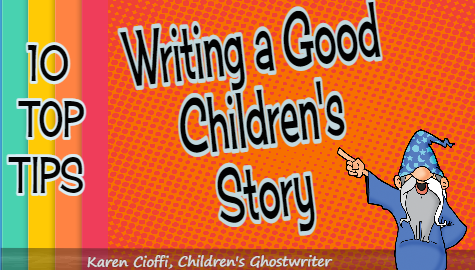A while ago, I received a query from a potential client who wanted a children’s picture book series.
She had seven ideas for storylines. Numbers 2 through 7 were sound ideas. They focused on a child protagonist and lent themselves to conflict, but the first one wasn’t kid-oriented.
The story idea for book one was to begin the series with a romance. It would bring two adults together and have them get married.
While the child protagonist was in the story, she was a tertiary character. The focus was on the background of the two adults, their meeting and falling in love.
This is not a kid’s story, not even for young adult and especially not for young children.
So, before you jump into that story, let’s go over some of the basics of what makes a good young children’s story.
1. A child must be the protagonist of the story.
Many new to the arena don’t understand that the story needs to revolve around the child protagonist.
Adults can be in the story as tertiary characters, but the story needs to focus on the protagonist.
The protagonist needs to come up with the solution to overcome the obstacle in the way of reaching her goal.
2. The protagonist should be older than the intended audience. So, if your target reader is five to seven, your protagonist should be around eight or nine. Children like to read up. They want the main character to be older than they are.
3. The theme of the story must be age-appropriate. A story idea focusing on high school romance is not age appropriate for young children.
The theme of the story is what the story is about. It may be sibling rivalry, bullying, materialism, over-achieving, diversity, or other life issues.
4. There must be conflict. The protagonist must have a goal and overcome obstacles to reach that goal.
On the importance of conflict, writing coach Suzanne Lieurance says,
Without a problem for your main character to solve and lots of rising action that leads to the character solving (or at least resolving) this problem, you don’t have a story. You have what editors call a series of “incidents,” and editors don’t publish incidents; they publish stories.
5. The protagonist should evolve or learn something from his journey.
In “Walking Through Walls,” the protagonist wants more than anything to become rich and powerful, even if it means stealing. Through his journey, he evolves and learns right from wrong.
6. The reader should take something away from the book. This is called the book’s take-away value.
It might be to see things differently, from another perspective. It may encourage the reader to strive for achievement. It may encourage a child to be a better friend to others.
What you want the reader to take away is your personal stamp on the story.
Some authors write with the take-away value in mind; some find it while writing the story.
7. Your characters should be realistic. This means they should be three-dimensional. They should have good characteristics and bad characteristics – just like real kids.
You might also give them quirks. Maybe your protagonist stutters slightly when nervous. Maybe she laughs too loud. Maybe he’s shy and hangs his head a lot. Maybe he bites his nails down too short.
Think about kids you know. Notice how they act. If you don’t have children in your life, watch them on television programs or in movies.
You might even go to the park and watch how children play. Just be sure to let the parents there know you’re a writer and doing research. You don’t want to alarm anyone.
8. The story must be engaging. You want the reader to become involved with the story and form a connection with the protagonist.
Your story should motivate the reader to turn the pages to see what will happen next.
Most of all, you want your story to be an entertaining experience for the reader.
9. Keep in mind that if you’re writing a picture book, the standard size is 32 pages. Of those 32 pages, you have about 24-26 pages for the story and illustrations. The other pages are for the book’s front and back matter.
This is important to keep in mind because it helps you organize your text into pages.
You might also create a dummy storyboard. A storyboard will give you a realistic view of how the book will look.
10. You need to write for the reader rather than for yourself.
Over the years, I’ve worked with a lot of people as a children’s ghostwriter and rewriter. Occasionally, I would get the individual who can’t seem to separate what they want to read or think a child would like to read from what it is to actually write for a young child.
One of the best ways to get a feel for what children want to read is to go to the library and take out 30-50 books on the genre you want your story to be in. Take out books that are ‘traditionally published.’
Traditional publishers know what children want. They know what sells. It’s their business. Use them as your guideline.

I’m a working children’s ghostwriter, rewriter, editor, and coach. I can help turn your story into a book you’ll be proud to be the author of, one that’s publishable and marketable.
OTHER HELP I OFFER:
HOW TO WRITE A CHILDREN’S FICTION BOOK
A DIY book to help you write your own children’s book.
PICTURE BOOK AND CHAPTER BOOK COACHING
Four to ten-week coaching programs.
WRITERS ON THE MOVE PRESS.
Self-publishing help for children’s authors.
You can contact me at: kcioffiventrice@gmail.com. Or give me a call at 347—834—6700. (Please leave a message- I’ll get back to you as soon as I can.)
Writing a Fiction Story – Walking Through Walls Backstory
Storytelling vs. Writing a Story
Should You Really Write a Book?


